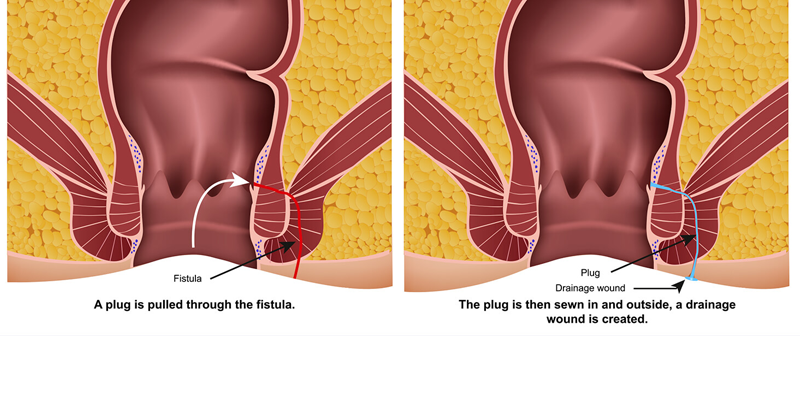
Fistula (Laser – FiLaC / VAAFT / Hybrid Techniques)
An anal fistula is an abnormal tunnel-like connection between the inside of the anal canal and the skin around the anus. It usually develops after an anal abscess that doesn't heal completely. Fistulas can cause persistent discomfort, pain, discharge, and recurrent infections. While simple fistulas can sometimes be treated with traditional surgery, complex or recurrent cases often require advanced, minimally invasive laser techniques such as FiLaC, VAAFT, or hybrid methods. These modern techniques aim to provide effective healing with minimal discomfort and faster recovery.
Causes and Symptoms
Anal fistulas commonly result from an untreated or improperly healed abscess. When the abscess drains, it may leave behind a tunnel that connects the infected gland inside the anus to the outside skin. Other causes include Crohn’s disease, tuberculosis, trauma, radiation therapy, or sexually transmitted infections.
Symptoms of a fistula may include:
– Pain or irritation near the anus
– Recurrent swelling or boils in the anal area
– Foul-smelling discharge or pus
– Bleeding during bowel movements
– Skin irritation and itching
– Occasional fever or general discomfort
Laser Treatment: FiLaC (Fistula-tract Laser Closure)
FiLaC is an advanced laser treatment that uses a radial laser probe to close the fistula tract from within. The laser energy is delivered in a 360-degree manner, causing controlled shrinkage and sealing of the tract without cutting or removing tissue. This procedure preserves the anal sphincter and greatly reduces the risk of incontinence.
Advantages of FiLaC:
– Minimally invasive and sphincter-sparing
– Reduced risk of recurrence
– Quick healing with minimal discomfort
– Performed as a daycare procedure
– No stitches or open wounds
VAAFT: Video-Assisted Anal Fistula Treatment
VAAFT is another modern and minimally invasive approach that uses a small video scope to visualize the inside of the fistula tract. The surgeon removes infected tissue under direct vision and closes the internal opening. VAAFT allows precise treatment with minimal trauma to surrounding tissues.
Benefits of VAAFT:
– Direct visualization of the fistula tract
– Accurate closure of internal opening
– Faster recovery and less pain
– Very low risk of damage to the sphincter muscle
Hybrid Techniques
In some cases, surgeons may combine multiple techniques (e.g., FiLaC with VAAFT or seton placement) to optimize treatment outcomes. These hybrid approaches are especially useful in complex or high-level fistulas where a single technique may not be sufficient. The goal is to ensure complete healing while preserving continence and minimizing complications.
Choosing the Right Treatment
The appropriate treatment for a fistula depends on various factors, including its complexity, length, location, presence of infection, and previous treatments. Laser-based methods like FiLaC and VAAFT are often preferred for their precision, safety, and quicker healing time. Consulting with a colorectal or general surgeon who specializes in fistula management is essential to determine the best approach for each patient.
Final Thoughts
Anal fistulas can significantly affect daily life, but with advancements in medical technology, effective and less invasive treatments are now available. Laser techniques such as FiLaC, VAAFT, and hybrid combinations offer a safer, quicker, and more comfortable solution for treating complex and recurrent fistulas. Early diagnosis and expert consultation are key to preventing complications and achieving long-term relief.

